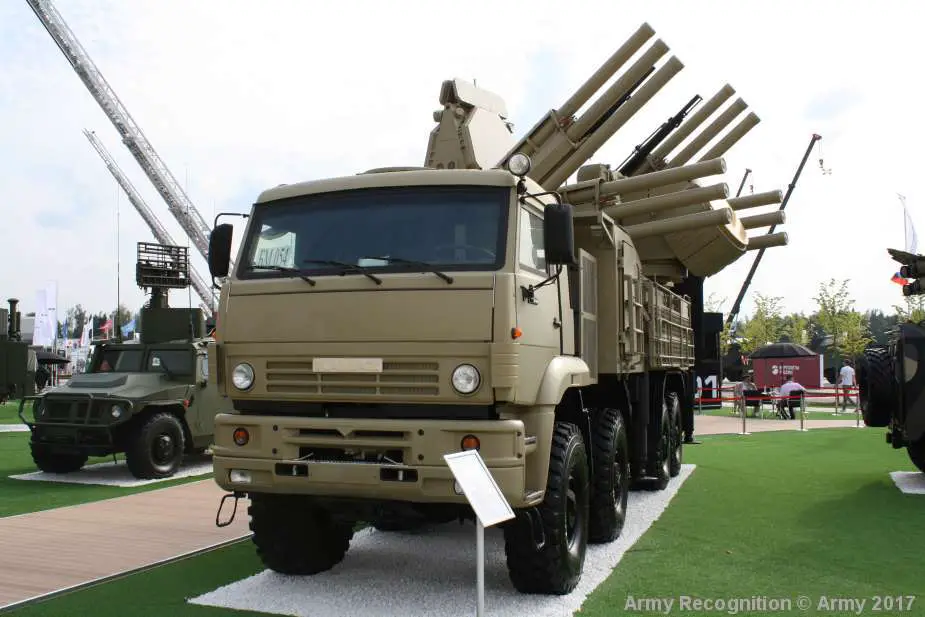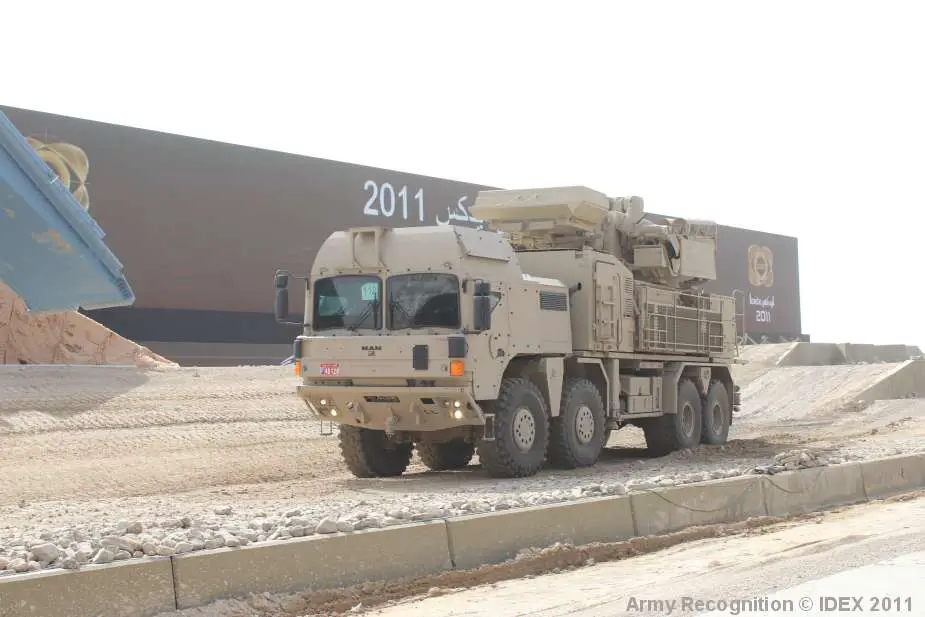Breaking news
Russian Pantsir-S1 secret deal shakes up Saudi Arabia's traditional air defense procurement.
On February 7, 2024, Rivista Italiana Difesa (RID) reported from the World Defense Show that sources confirmed the acquisition of the Russian Pantsir-S1 short-range surface-to-air missile systems by the Saudi Armed Forces. This development indicates a diversification in Saudi Arabia's air defense procurement, which has traditionally depended on defense technology primarily from the US and France.
Follow Army Recognition on Google News at this link

The Russian Pantsir-S1 air defense system combines missile and gun capabilities (Picture source: Army Recognition)
The transaction positions Saudi Arabia as the third Gulf nation to procure the Pantsir-S1 system, following the United Arab Emirates and Oman. According to RID, the transaction has encountered financial obstacles due to the exclusion of Russian banks from the international SWIFT system, a repercussion of sanctions imposed in response to Russia's actions in Ukraine. The specifics regarding the quantity and configurations of the Pantsir-S1 systems procured by Saudi Arabia were not disclosed. The cost of each system is reported to be around 15 million dollars, highlighting their role within the Russian military in protecting vital infrastructure, including airbases and surface-to-air missile systems such as the S-300 and S-400.
According to statements posted on Russian social media, Alexander Mikheev, CEO of Rosoboronexport, mentioned at the World Defense Show 2024 in Riyadh that certain Middle Eastern countries could consider localizing the production of the Pantsir air defense system within their territories. This suggests a possibility for cooperation between Russia and Middle Eastern nations, which likely includes Saudi Arabia, to explore the potential for domestic manufacturing of the Pantsir system.
Saudi Arabia's decision to integrate the Pantsir-S1 into its military capabilities reflects the Kingdom's existing military infrastructure. The Saudi Armed Forces, with a significant focus on air defense, aim to maintain the country's territorial integrity, and internal security, and contribute to regional stability. The Air Defence Forces, a specialized branch within the military, comprises 16,000 active personnel and includes 6 battalions equipped with M902 Patriot PAC-3 missiles, 17 batteries with Shahine/AMX-30SA, and 16 batteries with MIM-23B I-Hawk systems, among others.
The Pantsir-S1 system, recognized by its NATO reporting name SA-22 Greyhound, is designed to counter a variety of aerial threats such as aircraft, helicopters, drones, precision munitions, and cruise missiles. Its automated operation and radar capabilities are intended to enhance detection and engagement efficiency, contributing to the protection of military and strategic sites.
The acquisition of the Pantsir-S1 by Saudi Arabia is notable in the context of global military technology, especially considering there is no direct equivalent in NATO arsenals. The system's deployment is intended to complement the extensive range of air defense capabilities already possessed by the Kingdom. Historically, the Gepard anti-aircraft self-propelled gun system developed by Germany in the 1960s served a somewhat similar role within NATO, although it is based on a different operational concept.
The Pantsir-S1, also recognized under the NATO reporting name SA-22 Greyhound, is a Russian-made air defense system combining missile and artillery capabilities to defend military installations, industrial sites, and troop formations from aerial threats. This system is designed to counter a broad range of targets such as aircraft, helicopters, drones, precision-guided munitions, and cruise missiles, making it suitable for protecting vital assets and supporting air defense operations across different military branches.
The system incorporates advanced automation and radar technology to improve operational efficiency and provide comprehensive situational awareness. Its radar capabilities enable the detection and tracking of both aerial and ground threats, offering extensive defensive coverage. The automation within the system aims to reduce operator workload, potentially leading to faster response times against incoming threats.
Armament-wise, the Pantsir-S1 is equipped with 12 57E6 surface-to-air guided missiles and two 2A38M 30mm automatic cannons, allowing for the engagement of targets at various distances and altitudes. The missile component can target objects up to 20 kilometers away and at altitudes up to 15 kilometers, while the autocannon is effective against threats within a 4-kilometer range and up to 3 kilometers in altitude. This dual armament configuration enables the system to address a wide range of aerial threats, from longer-range engagements using missiles to closer threats that can be countered with cannon fire.
The missile system utilizes 57E6 missiles, which are two-stage solid-fuel rockets armed with high-explosive fragmentation warheads, designed for long-range and high-altitude engagements. The autocannons are capable of firing at a rate of 2,500 rounds per minute, using various types of ammunition to engage closer threats effectively.
Radar functionality is critical to the Pantsir-S1's performance, with a system that includes Target Acquisition Radar (TAR) in the E-band for initial detection and a Target Tracking Radar (TTR) in the J-band for continuous target tracking and missile control. This radar system enables the Pantsir-S1 to detect targets up to 36 kilometers away and at altitudes up to 15 kilometers, with an engagement range for missiles between 1.2 and 20 kilometers and altitudes from 0 to 15 kilometers. The system's cannons can engage targets up to 4 kilometers away and at altitudes up to 3 kilometers. Together, the radar and engagement capabilities allow the Pantsir-S1 to operate in various weather conditions and against electronic warfare countermeasures.

The Pantsir-S1 systems utilized by the UAE armed forces are installed on MAN military 8x8 truck chassis. (Picture source: Army Recognition)





























